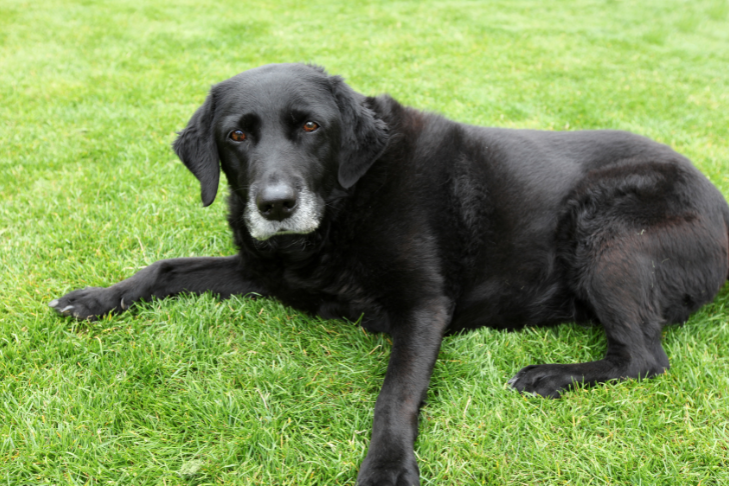Managing Arthritis in Dogs: Tips for Improving Mobility & Comfort

80% of dogs have arthritis by the age of eight, and 20% show signs by age one.
These statistics mean many dog parents will have to manage arthritis at some point in the life of their dogs. A diagnosis does not mean your dog cannot be active. It is just a matter of changing up the routine.
In this article, we look at what arthritis is in dogs, if you can walk an arthritic dog, and how to help your arthritic dog.
Causes of Arthritis in Dogs
Arthritis is a disease that causes stiffness and painful inflammation of the joints. The disease often affects older dogs but is also prevalent in younger ones after problems with joint and bone development.
The bony surfaces of the joints of your pet have a thin layer of cartilage. It is lubricated with joint fluid so two surfaces slide over each other freely and with minimal friction. The cartilage inside the joints of an arthritic dog experiences damage. It is less smooth and causes the bone surfaces to rub.
The condition causes discomfort for your dog and further cartilage damage. Increased friction causes new bone to form around joints, resulting in rigidness and movement limitation. Arthritis is a degenerative joint disease. While all joints are susceptible to the condition, arthritis is more common in the spine, hips, and knees.
How to Tell if Your Dog Has Arthritis Pain
Dogs can mask their pain, but there are many signs you can watch out for. These include:
- Reluctant to walk
- Yelping when touched
- Lameness
- Feeling pain when getting up
- Licking affected joints
- Loss of muscle mass (atrophy)
- Limping, especially at night and after exercise
- A hunched posture
Make an appointment with your veterinarian if you suspect your pet may have arthritis.

Should I Walk My Arthritic Dog?
Yes.
Walking your arthritic dog has its benefits. It helps your pet preserve lean muscle mass and “muscle through” the weakness and discomfort that comes with the disease. Regular exercise loosens joints and decreases stiffness associated with a sedentary lifestyle.
But you need to make special considerations when walking your arthritic dog.
Maintain a Healthy Weight
Extra pounds mean more work for the joints. Adopt a healthy weight loss plan that includes dog-friendly vegetables if your dog is overweight.
A 50-pound dog that is only five pounds overweight means it is exerting 10 percent more stress on already damaged joints. This creates a vicious cycle of pain that leads to decreased mobility, fewer exercises, more weight gain, and more pain.
Consider the Temperature
Arthritic dogs experience more pain on wet, wintry days, so it’s important to keep your walks shorter during that time.
Warm the joints and muscles through massage using products such as CBD topicals for dogs. This will help loosen stiff joints and improve circulation in muscles. You also want to avoid extreme heat, which can lead to heat exhaustion regardless of the dog’s health status.
Take your dog for a walk around the neighborhood when the weather is cool, but not cold. Carry along water and a cell phone in case the walk becomes too strenuous and you need to call for a ride.
Take Things Slow
Walk at your dog’s pace. Start with shorter walks during the cooler portions of the day. It is not a race, so take it slow. Multiple short walks a day will help strengthen muscles if your dog cannot go long distances.
Do not force your dog to continue if they are showing signs of strain or tiredness. Remember, this is the dog’s time and not your own. Showing love and patience will go a long way during these moments.
Get a Mobility Device
An arthritic dog may benefit from using mobility aids. A sling, dog wheelchair, harness, or a beach towel draping under the dog’s body offer support for a better walking experience.
Avoid using a collar with arthritic pets because they can cause stress on the neck. Plus, you want to avoid walking with retractable leashes since they do not offer excellent speed control.
Warm-Up
A minute or two of gentle play will help a dog with arthritis move easier. It also helps reduce muscle injuries, cramps, sprains, and gradually speeds up their heart rate.
Try a little incentive like CBD chews for dogs and affection. A positive warm-up exercise experience is a happy one. Hip & Joint Chews for dogs contain ingredients such as glucosamine, noni, and chondroitin to support healthy joints.
Wrap warm towels from the dryer around the dog’s legs or moist and warm towels for heat. You can also use heating pads on their lowest setting with a towel between the dog and the pad. Make sure that any form of heat you are using is cool enough to touch comfortably.

Consider Other Physical Activities
Apart from walks, there are plenty of low-impact activities you can still enjoy together, including:
- Swimming – It is a non-weight-bearing exercise that helps increase an arthritic dog’s motion range and build muscle. See whether there are pools, canine-friendly hydrotherapy centers, public beaches, or dog parks with a water feature close to you.
- Short hikes – Find a trail that is level. Depending on your dog’s condition, start with a few short hikes to make sure they are comfortable.
- Indoor activities and games – Keep your dog active and entertained indoors when the weather is not great with basic nose work activities such as “find the treats,” hide and seek, or interactive toys.
Your Arthritic Pup Can Still Have Fun and Be Active
Don't dwell on what your dog can't do. Think of all the activities you two still enjoy together. Engaging your arthritic dog in daily walks is keeping them happy and healthy!


